Natural park Fanes-Sennes-Prags
The natural park of Dolasila and the Ladin legends
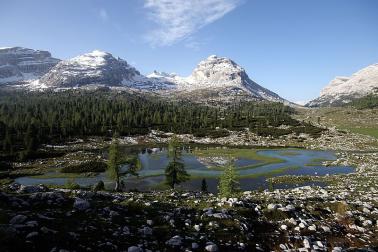
The Fanes-Sennes-Prags Nature Park extends over an area of around 25,680 hectares belonging to the villages of Abtei, Prags, Toblach, Wengen, Enneberg and Olang. The park is situated between the mountain slopes facing Pustertal in the north, the forests facing Gadertal in the west and the borders of the province in the south. The western boundary separates the park from Drei Zinnen and goes through the valley Höhlensteintal.
Almost all of the rock formations inside the nature park are made up of sedimentary rocks like limestone and dolomite. They were mainly formed by various micro-organisms which used to live in the sea.
Habitats
The Forest Belt
The biggest part of the forests situated higher than 1,000 meters is covered by spruces. The spruce forests extend from around 900 to 2,000 meters above sea level. The nearer we get to the timber line, the more they are interspersed with larches and cembra pines. In this area, the tree groups become progressively smaller, until the extended mugo pine fields are interspersed only by single trees. On the dry debris slopes of the valleys Höhlensteintal and Rautal we can find relatively unpretentious pine trees. In the light mountain forests, there is a lush vegetation of shrubs, the composition of which is determined by the acid humus layer (bilberry, cowberry and alpine rose). Since the ground consists of lime, also the Adenostyles alpina and a special kind of alpine rose, the Rhododendron hirsutum grows there. The dense shrub vegetation in the spruce forests provides the capercaillie and the hazel grouse with the necessary food. Pine martens, foxes and roe deer also settle here. Some bird species, such as the goshhawk, the sparrowhawk and the jay can often be seen in these areas.
Meadows and Alpine Pastures
Most of the nature park consists of meadows and Alpine pastures. Some of them are mowed once a year, others only pastured. These habitats are shaped by man's work. A great variety of species can be found on the meadows. Among the many flower species found in dry places are the arnica, the gentian, the knotgrass ( Polygonum ) and the Crespis aurea . If the pastures are used intensively, some species resistant to steps and disdained by the cattle take over. The building of cottages and hay-sheds grants good living conditions to black redstarts, pied wagtails, tit-mice and weasels. Also birds which nest on the ground, like the water pipit, can rear their children here, due to the late mowing of these pastures.
Alpine Fields and Debris Slopes
Between 2,000 and 2,800 meters above sea level there are more or less closed grass mats and grass communities. The lime meadows of the Dolomites are composed of blue moor grasses and evergreen sedges. The cushion sedge and the mountain aven can also be found in these meadows. The widespread dragonmouth, the alpine sneezewort ( Achillea oxyloba ) and the globularia are also characteristic of the Dolomites. On some places edelweiss can be found. A series of specialists, such as the Rhaetian poppy with its yellow flowers and the penny-cress ( Thlaspi rotundifolium ) grow in the debris cirques, which can reach the valley bottom. On the alpine grass mats the entrances to the marmots' dens can sometimes be seen. In some quiet places mountain hares and rock ptarmigans can be observed, especially in Winter, Spring and late Autumn.
Crevices
Some specialists are able to grow in rock clefts, crevices and even on the bare rock. Among them are different cushion plants, the devil's claw, the edelweiss and the dolomite cinquefoil ( Potentilla nitida ). Hausmann's androsace, as well as special kinds of sedges and saxifrages are also able to live in the rocky areas. The golden eagles and the ravens build their nests there. As for mammals, chamoises and the ibexes, the latter re-inserted by man, live in these high regions.
Quelle: www.provinz.bz.it


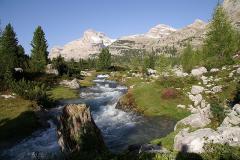
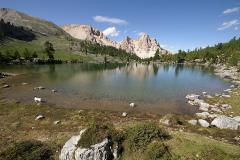
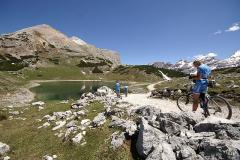
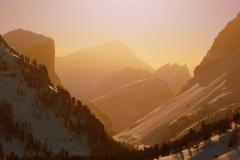
Comments:
You may also be interested for:
For your stay Ladinia recommends:
Fordi
Frapes
Haflingerhof
Ciasa Ploner